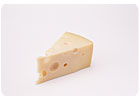Yes, I’m in the holiday spirit and you, as a milk buyer, may want to imbibe in a few more holiday spirits.

Thanksgiving hasn’t arrived yet as I write this, but I’m in the holiday spirit and I do sincerely wish one and all a Very Happy New Year!
Yes, I’m in the holiday spirit and you, as a milk buyer, may want to imbibe in a few more holiday spirits. You may want another Tom & Jerry (Where I come from that’s an egg nog fortified with rum and or brandy.). It looks like it is going to be a wild and woolly year in the milk pricing business.

You may be in the beverage milk business or the yogurt business, but forgive me: I use the block cheese price as a yardstick. Why? Because this price correlates most closely with almost all milk and dairy product prices in the business. When the cheese price moves, most of the other prices move in the same direction and at a like amount.
Back to the analysis. Not much volatility and relatively low prices were very good for milk and dairy product sales during 2006. But that’s history and 2007 looks like it will be more like the monsters of 2004 and 2005.
Remember 2004? That’s when cheese traded anywhere from a low of $1.30 to a high of $2.20. That’s when the Class I base price jumped by six bucks in a single month. That’s when the cheese price averaged $1.65 for the year.
I don’t think we’ll see a repeat of 2004 this year, but we may get a taste of 2005. That’s when the cheese price whipped around between $1.3000 and $1.7575; more of a roller coaster ride than a milk buyer really needs. During 2004, the cheese price averaged $1.4928.

I’d like to translate these cheese prices into milk prices for you, but at the urging of dairy manufacturers, the U.S. Department of Agriculture is proposing some changes to pricing formulas for Class III milk (cheese and whey) and Class IV milk (butter and nonfat dry milk). What changes are made, if any, and when the changes become effective are unknowns at this time.
Meanwhile, USDA has also been asked to consider changes to the Class I (beverage milk) and Class II (ice cream and yogurt) pricing formulas.
Why do I expect higher prices during 2007? Demand for milk and dairy products was very strong during 2006, but milk production was up about 2.5%. I think 2007 will be another good year of demand. Granted, higher prices will temper demand, but not very much. Milk production will only increase by about 1%.
Meanwhile, the milk supply probably won’t grow as much as demand. Milk production tends to cycle higher and lower for a variety of reasons. Paramount is the relationship between the cost of production and the price of milk. This relationship has been out of whack for almost a year. Producers have gone through a great deal of red ink.
Although energy prices have eased back some, the damage has been done. With ethanol plants coming online (48 over the next several months), milk producers have a new competitor for corn, an important feedstuff. The corn price had been sub-two dollars per bushel for a long time; now, it is above three bucks.
Mother Nature caused a host of problems last summer when extreme heat killed several thousand cows and disrupted the reproductive cycle of hundreds of thousands. Heat and rain reduced the quality and quantity of forage available in some major production regions.
Why do I expect higher prices during 2007? Supply and demand is the answer in a nutshell.